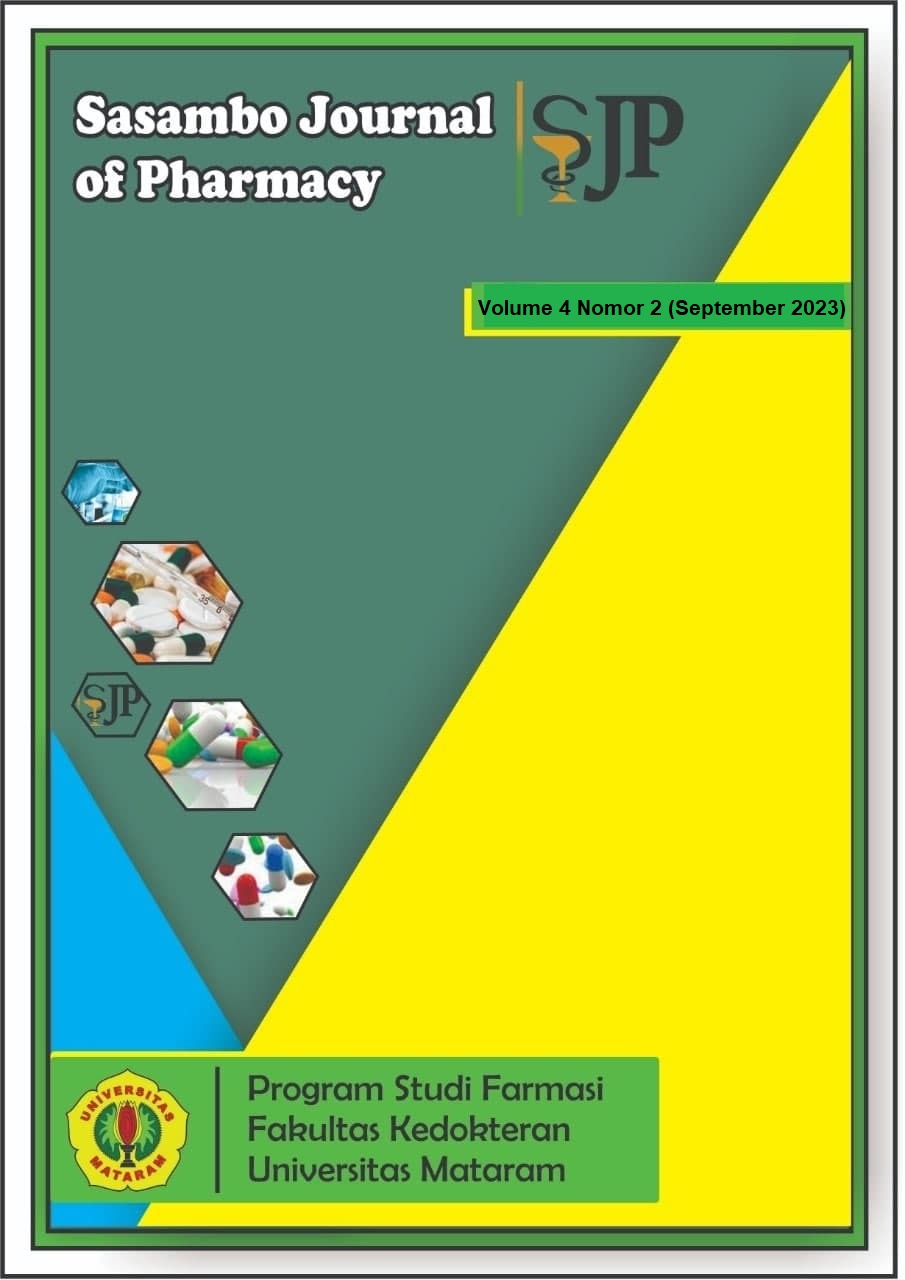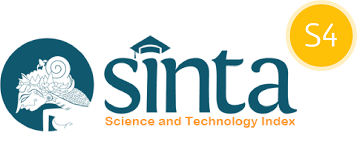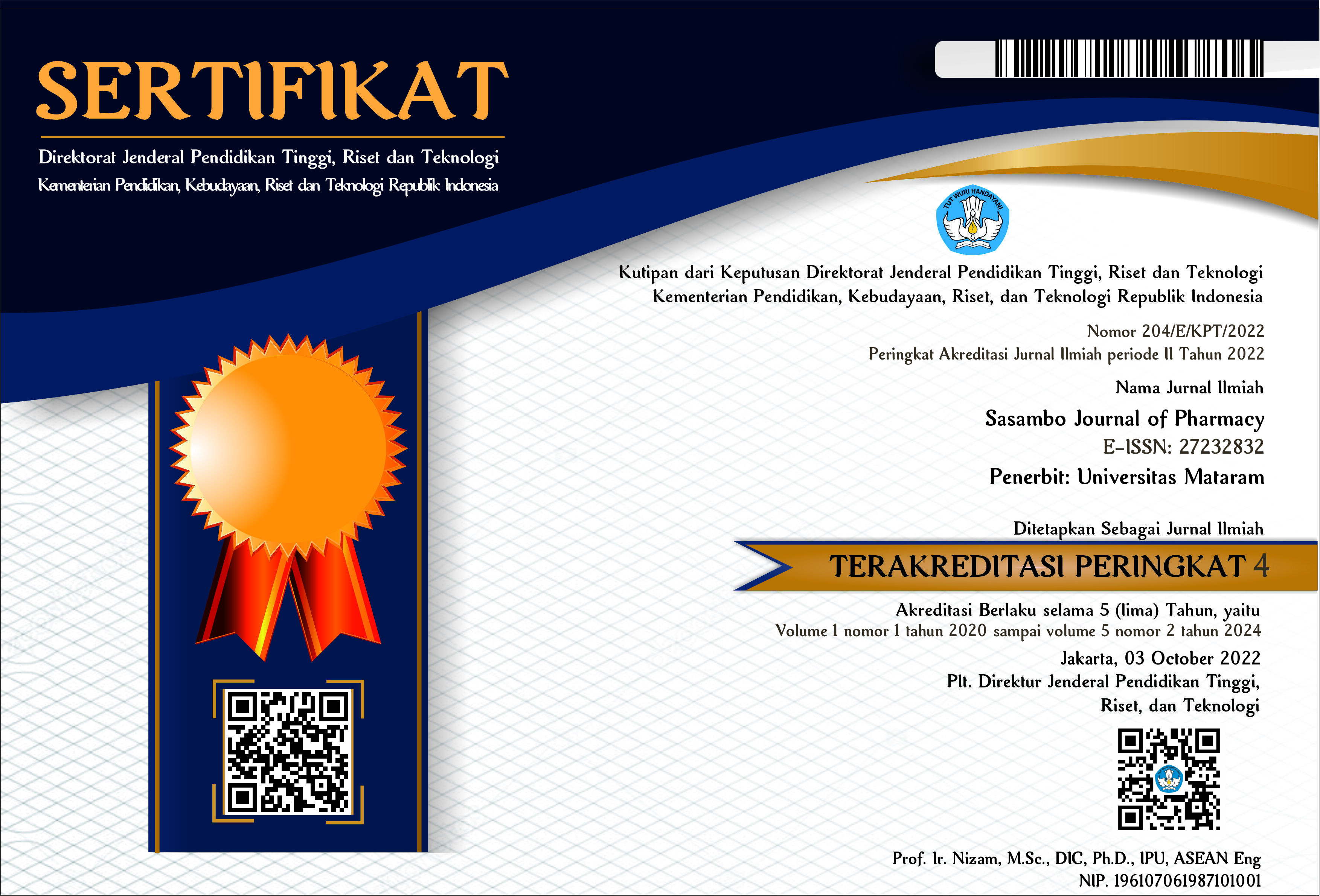Tingkat pengetahuan mahasiswi Fakultas Keguruan Ilmu Pendidikan Universitas Mataram mengenai menstruasi
DOI:
10.29303/sjp.v4i2.273Downloads
Abstract
Menstruation is a physiological event for female adolescents and menstruation is also an indicator of sexual maturity in female adolescents. This study aims to determine the level of knowledge of female students of the Teaching and Education Faculty of Mataram University regarding menstruation. This research is an observational study with a cross-sectional design. The research instrument was a questionnaire distributed online with students of the students of Teaching And Educational Faculty, at Mataram University as respondents who were then analyzed descriptively. Descriptive analysis was carried out for characteristic data and the knowledge level of respondents. The results of the study in the age range of 17 years to 26 years, the average level of knowledge is greater in the age range of 26 years. This can be influenced by the age factor, the older you are, the more knowledge you will get. Meanwhile, at a high level of knowledge, there were 156 people who were included in that category, 43 people who were included in the sufficient category, and 1 person who was included in the low category. level of knowledge about menstruation in students of the teaching and educational faculty shows that 156 people are included in the high category, 43 people are included in the sufficient category, and 1 person is included in the low category.
Keywords:
knowledge, menstruation, studentReferences
Adika, A. (2013). Self care practices of menstrual hygiene among adolescents school going girls in Amassoma Community, Bayelsa State. International Journal of Nursing and Midwifery, 5(5), 99–105. https://doi.org/10.5897/ijnm2013.0102
Anggriani, A., Mulyani, Y., & Pratiwi, L. D. (2021). The Effect Of Pharmacological And Non- Pharmacological Therapy On The Reduction Of Menstrual Pain In Students. Jurnal Riset Kefarmasian Indonesia, 3(3), 174–188.
Ayuningtyas N. D., S. L. (2011). Hubungan Antara Pengetahuan Dan Perilaku Menjaga Kebersihan Genetalia Eksterna Dengan Kejadian Keputihan Pada Siswi SMA Negeri 4 Semarang. Universitas Diponegoro.
Dahlan, A. (2017). Pengaruh Terapi Kompres Hangat Terhadap Nyeri Haid (Dismenorea) Pada Siswi Smk Perbankan Simpang Haru Padang. Jurnal Endurance, 2(1), 37. https://doi.org/10.22216/jen.v2i1.278
Fitri, F. M. (2014). Hubungan Pengetahuan Remaja Putri Tentang Menstruasi Dengan Perilaku Higiene Menstruasi Di Pesantren Arrisalah Kota Padang. Universitas Esa Unggul.
Gustina, E., & Djannah, S. N. (2015). Sumber Informasi Dan Pengetahuan Tentang Menstrual Hygiene Pada Remaja Putri. Jurnal Kesehatan Masyarakat, 10(2), 147. https://doi.org/10.15294/kemas.v10i2.3375
Himarda Sri Santi Mbungo, E. (2016). Hubungan Pengetahuan Dan Sikap Tentang Kesehatan Reproduksi Terhadap Personal Hygiene Saat Menstruasi Pada Siswi Di SMAN 1 Merauke. Jurnal Ilmiah Indonesia p–ISSN: 2541-0849 e-ISSN: 2548-1398, 8(3), 1–23.
Irianti, D., & Tiarahma, L. (2021). Tingkat Pengetahuan Remaja Putri Dalam Menjaga Kebersihan Organ Reproduksi Saat Menstruasi. Jurnal Ilmu Kesehatan Insan Sehat, 9(1), 20–23. https://doi.org/10.54004/jikis.v9i1.19
Leliana. (2010). Hubungan Pengetahuan Remaja Putri Terhadap Kesiapan Dalam Menghadapi Menarche Di SD Al-Alzar Medan. Universitas Sumatera Utara.
Lindaan, M. P., Rantung V V., M. M. Y. (2016). Persepsi Masyarakat Terhadap Pengembangan Industri Rumah Panggung Di Desa Tombasian Atas Kecamatan Kawangkoan Barat Kabupaten Minahasa. Agri-SosioEkonomi Unsrat, 12, 349–362.
Maidartati, Hayati, S., & Hasanah, A. P. (2018). Efektivitas Terapi Kompres Hangat Terhadap Penurunan Nyeri Dismenore Pada Remaja Di Bandung. Jurnal Keperawatann BSI, VI(2), 156–165.
Muhamad, Z., Hadi, A. J., & Yani, A. (2019). Pengetahuan Dan Sikap Remaja Putri Dengan Pencegahan Keputihan Di Mts Negeri Telaga Biru Kabupaten Gorontalo. PROMOTIF: Jurnal Kesehatan Masyarakat, 9(1), 9–19.
Nisa, A. H., Winarni, S., & Dharmawan, Y. (2020). Faktor-Faktor Yang Berhubungan Dengan Praktik Personal Hygiene Saat Menstruasi Pada Remaja Putri Pondok Pesantren Al Asror Kota Semarang Tahun 2019. Jurnal Kesehatan Masyarakat (e-Journal), 8(1), 145–151.
Sella Berliana Wardoyo, A. S. (2021). Tingkat pengetahuan remaja putri tentang menstruasi dan penanganan dismenorea. Carolus Journal of Nursing, 3(2), 122–129.
Solehati, T., Trisyani, M., & Kosasih, C. E. (2018). Gambaran Pengetahuan, Sikap, Dan Keluhan Tentang Menstruasi Diantara Remaja Puteri. Jurnal Keperawatan Komprehensif (Comprehensive Nursing Journal), 4(2), 86–91. https://doi.org/10.33755/jkk.v4i2.110
Wahyudi, N., Listautin, & Riastawaty, D. (2023). Personal Hygiene pada saat Menstruasi. Cenderabakti: Jurnal Pengabdian Kepada Masyarakat, 2(1), 1–7. https://doi.org/10.55264/cdb.v2i1.17
License
Copyright (c) 2023 The Author(s)

This work is licensed under a Creative Commons Attribution 4.0 International License.
Authors who publish with Sasambo Journal of Pharmacy (SJP), agree to the following terms:
- Authors retain copyright and grant the journal right of first publication with the work simultaneously licensed under a Lisensi Creative Commons Atribusi 4.0 Internasional. This license allows authors to use all articles, data sets, graphics and appendices in data mining applications, search engines, web sites, blogs, and other platforms by providing an appropriate reference. The journal allows the author(s) to hold the copyright without restrictions and will retain publishing rights without restrictions.
- Authors are able to enter into separate, additional contractual arrangements for the non-exclusive distribution of the journal's published version of the work (e.g., post it to an institutional repository or publish it in a book), with an acknowledgment of its initial publication in Sasambo Journal of Pharmacy
- Authors are permitted and encouraged to post their work online (e.g., in institutional repositories or on their website) prior to and during the submission process, as it can lead to productive exchanges, as well as earlier and greater citation of published work (See The Effect of Open Access).







